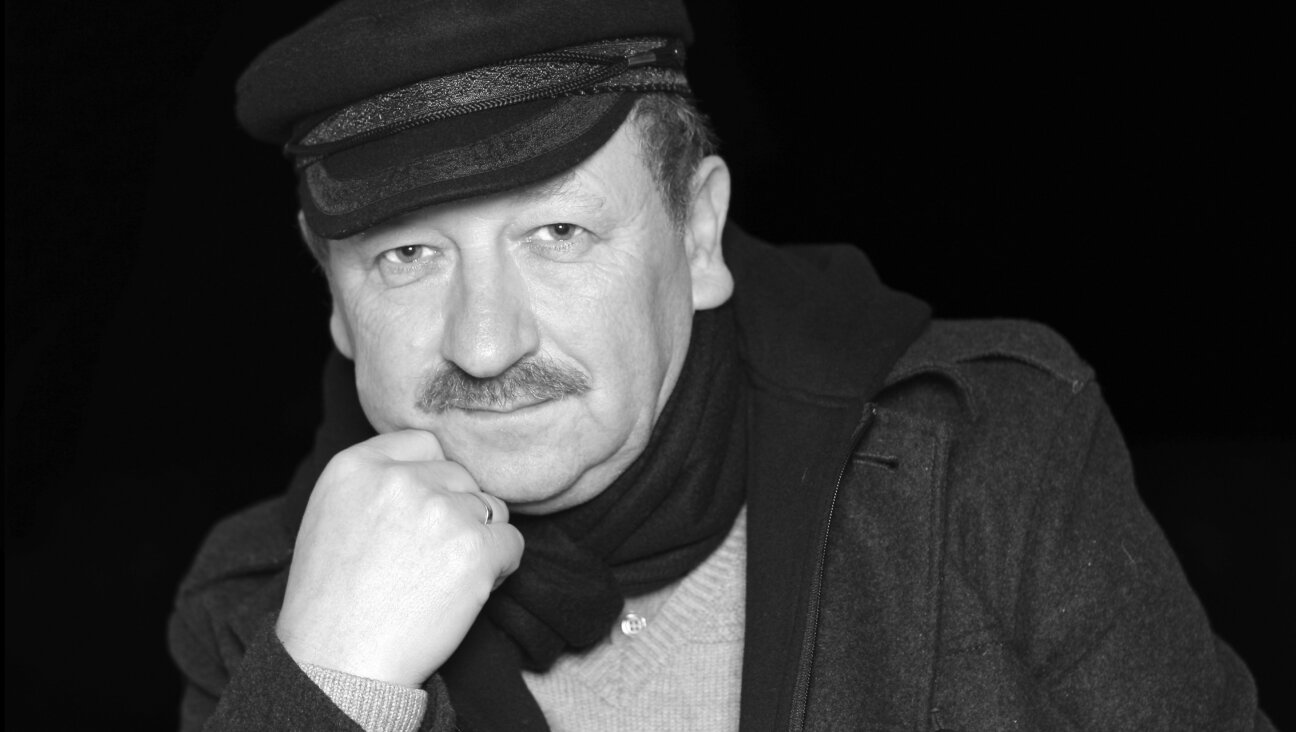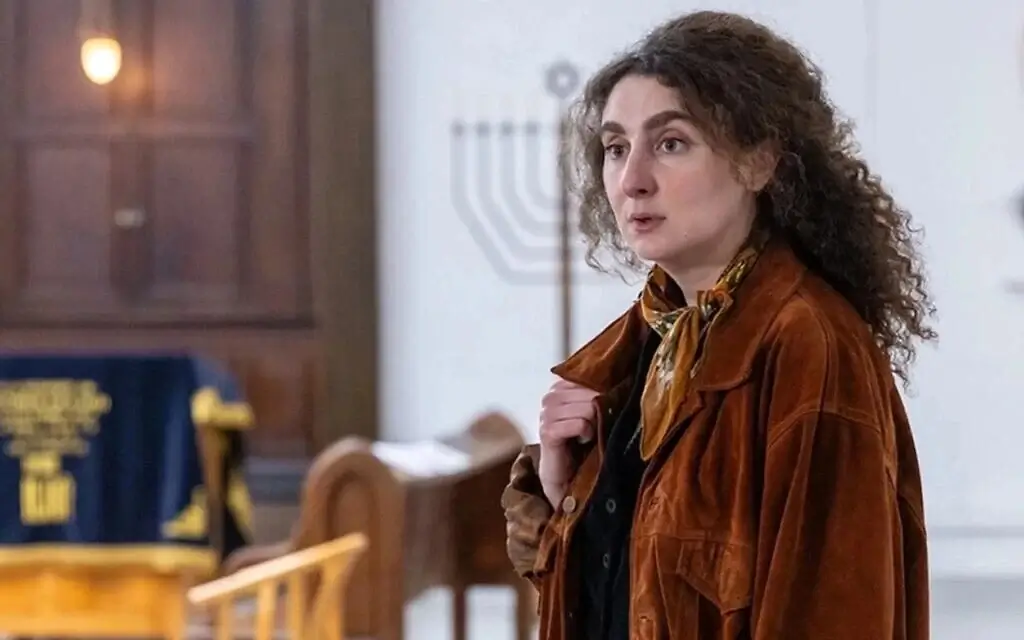So, Why Are Bob Dylan’s Videos So Violent Anyway?

Homme Fatale: In ‘The Night We Called It a Day,’ Dylan and Robert Davi vie for a woman’s affection Image by YouTube
If you’ve been watching Bob Dylan videos lately (I know it’s a select group, but if you’re reading this article, you’re probably in it), you may have noticed that a number of them are violent. Seriously violent. Gunshots, stabbing, torture violent. You may have wondered, what’s up with that?
The three most violent — “Beyond Here Lies Nothin’” (from 2009’s “Together Through Life”), “Duquesne Whistle” (from 2012’s “Tempest”), and the latest, “The Night We Called It a Day” — are all directed by the same man, Nash Edgerton. In Hollywood (and on IMDb), Edgerton is best known as a stunt man and stunt coordinator; his 126 credits include “The Matrix” and the second “Star Wars” trilogy. Other than the Dylan videos, his other directing credits are a handful of shorts.
According to an interview with Pitchfork, Edgerton had hardly any contact with Dylan when he worked on the first video. Because of privacy concerns, Dylan’s management only played Edgerton the song once, over the phone. The two never met — and as of that interview, Edgerton didn’t know whether Dylan had even seen it.
Well, at some point he must’ve, since Edgerton was invited back — first for the atrocious “Must Be Santa” from Dylan’s mystifying 2009 Christmas album, then for “Duquesne” and “Shadows In The Night.” And while Dylan doesn’t appear in “Beyond Here Lies Nothin,’” he has appeared in each of the videos since. At some point, there must have been a meeting of the minds.
Which brings us back to the question of what, exactly, is up.
Let’s dispatch one concern, which is the violence itself. I suppose there are still some folks out there who think of Dylan as the peacenik protest singer, “Blowing in the Wind” and all that. But even if that persona is reflective of reality (which it mostly isn’t), it’s about eight Dylans ago. As early as 1967, Dylan was singing about John Wesley Harding, who “was a friend to the poor” and “traveled with a gun in every hand.” Since then, so many people have been shot, stabbed and beaten down in Dylan’s songs that Rolling Stone could even compile the hilarious “History of Violence: Murder and Justice in Bob Dylan Songs” that spans five decades.
In fact, that juxtaposition — violence, murder and justice — is the key to understanding the new videos.
Let’s remember, even John Wesley Harding himself was “never known to hurt an honest man.” And if you look closely, that’s the principle at work in the videos too.
Thematically, Edgerton’s three compositions (omitting “Must Be Santa”) bear little connection to the content of the songs. Rather, they are evocative of the moods the songs create.
“Beyond Here Lies Nothin’” is one of Dylan’s so-called “Mexican roadhouse” songs, because it sounds like it’s being played by a bar band somewhere along the Rio Grande. The lyrics are secondary to the way they’re delivered; as John Lennon once said, you don’t need to know what Dylan’s singing, only the way he sings it: “I love you pretty baby/You’re the only love I’ve ever known/Just as long as you stay with me/The whole world is my throne.” As someone once said of the entire “Together Through Life” album, these words could be song by a teenage pop star, and they’d be innocuous. But in Dylan’s ragged growl, they take on a sense of doom and foreboding.
That darkness is all over the video. In it, a man walks into a cheap apartment (probably not far from that Mexican bar) and, sensing something his wrong, enters the bedroom — only to be hit over the head with a bottle by his (ex?) girlfriend. A full-on brawl ensues; it becomes clear the woman is trapped in the apartment, and she and the man punch, kick, strangle, stab and throw one another. Eventually, the woman escapes (just barely), runs over the man with his car, and, as he lays dying, kisses him.
Edgerton has picked up here on the darkness in the obsessive lyrics (“beyond here lies nothin’”) and the rollicking tone of the music. This isn’t even a love affair anymore; it’s obsession, control and violence. “These songs take no prisoners,” Dylan once wrote of the classic blues songs he covered on the “World Gone Wrong” album. Neither does this video.
And yet, justice is served. The man who has been abusing women gets his comeuppance.
There’s a very similar pattern in “Duquesne Whistle.” This time, the feel of the song is deceptively light, jaunty, even. And sure enough, the video begins with a young man trying to woo a beautiful woman.
But that all falls apart. The narrator of the song (co-written by Dylan and the longtime Grateful Dead songwriter Robert Hunter) is similarly obsessed (“You’re the only thing alive that keeps me going”) and possibly at death’s door. And the “hero” of the video turns out to be creepy. The woman maces him. But when he sees her next, again he chases after her — knocking over a ladder, running across traffic.
And that’s where the video goes insane. The “hero” is spotted by the man he knocked off the ladder, and is thrown into a van, taken to a warehouse, and beaten with a baseball bat. The violence is shocking, especially as everything had seemed to be so light and sweet just a minute ago. But it, too, is just: Again, a man disrespects a woman and suffers terribly for it.
Dylan, meanwhile, saunters down the street with a motley crew reminiscent of the group assembled for the cover of “The Basement Tapes.” He appears in the story only briefly, when the young man is dumped on the side of the road (still dreaming of his girl), and Dylan steps right over him.
That brings us, finally, to the latest video, for a song Frank Sinatra made famous, “The Night We Called It a Day.” Once again, the video tracks the mood — not the lyrics. The words of the song are mournful, plaintive: “There wasn’t a thing left to say/The night we called it a day.” The mood is one of loss; the song and its arrangement possess a kind of elegance and class that evoke a bygone era.
Fittingly, the video is film noir — black and white, stylized, a treat. Dylan is now center stage; he and actor Robert Davi play dueling lovers, vying for the affection of the femme fatale played by Tracy Phillips. But Davi’s character breaks into the woman’s apartment, forcing himself on her — only to find Dylan already there, pointing a gun at him. Once again, violence ensues. The woman chloroforms and kills him. She and Dylan run off into the elevator — but each pulls a gun on the other. She who lives by the sword dies by the sword, and Dylan gets away.
In all three of these films, there’s a kind of Old Testament justice that reminds one of Clint Eastwood with his mournful, tragic tone; there are no heroes here, only violence. Yet the violence is not random. Dylan remains a believer — whether Jewish or Christian or both — and the world of these videos is an ordered one. Men abuse women, men die. (The only woman who loses in the end is the one who double-crosses Dylan, who has not done her wrong.)
Through it all, both the videos and songs rely on evocation rather than description. “Shadows in the Night,” with Dylan covering songs written by others, is the clearest example of this. (The album contains his best singing in years, and also reveals how much of the growl on “Tempest” and other albums was a stylistic choice.) But it’s been this way with much of Dylan’s later work; the lyrical tropes of blues, rock and roots are just the framework for the expressive voice. The sad songs are gesturing to sorrows that go unspoken: those of aging, perhaps, or friends who have died. They use the language of love to express truths of the heart that might be cheapened by being conveyed literally.
The world in these short films is brutal, but not senseless. Like some of Dylan’s latter-day personae, especially on “Tempest” — with songs like “Pay in Blood” and “Narrow Way” — or like those of Johnny Cash, the worldview of these videos is colored by experience and the hard truths of human existence. But they do not end in nihilism. Amid all the blood, there is faith.
Jay Michaelson is a contributing editor of the Forward.
The Forward is free to read, but it isn’t free to produce

I hope you appreciated this article. Before you go, I’d like to ask you to please support the Forward.
Now more than ever, American Jews need independent news they can trust, with reporting driven by truth, not ideology. We serve you, not any ideological agenda.
At a time when other newsrooms are closing or cutting back, the Forward has removed its paywall and invested additional resources to report on the ground from Israel and around the U.S. on the impact of the war, rising antisemitism and polarized discourse.
This is a great time to support independent Jewish journalism you rely on. Make a gift today!
— Rachel Fishman Feddersen, Publisher and CEO
Support our mission to tell the Jewish story fully and fairly.
Most Popular
- 1

News School Israel trip turns ‘terrifying’ for LA students attacked by Israeli teens
- 2

Culture Cardinals are Catholic, not Jewish — so why do they all wear yarmulkes?
- 3

Fast Forward Why the Antisemitism Awareness Act now has a religious liberty clause to protect ‘Jews killed Jesus’ statements
- 4

Fast Forward Ye debuts ‘Heil Hitler’ music video that includes a sample of a Hitler speech
In Case You Missed It
-

Yiddish קאָנצערט לכּבֿוד דעם ייִדישן שרײַבער און רעדאַקטאָר באָריס סאַנדלערConcert honoring Yiddish writer and editor Boris Sandler
דער בעל־שׂימחה האָט יאָרן לאַנג געדינט ווי דער רעדאַקטאָר פֿונעם ייִדישן פֿאָרווערטס.
-

Fast Forward Trump’s new pick for surgeon general blames the Nazis for pesticides on our food
-

Fast Forward Jewish feud over Trump escalates with open letter in The New York Times
-

Fast Forward First American pope, Leo XIV, studied under a leader in Jewish-Catholic relations
-
Shop the Forward Store
100% of profits support our journalism
Republish This Story
Please read before republishing
We’re happy to make this story available to republish for free, unless it originated with JTA, Haaretz or another publication (as indicated on the article) and as long as you follow our guidelines.
You must comply with the following:
- Credit the Forward
- Retain our pixel
- Preserve our canonical link in Google search
- Add a noindex tag in Google search
See our full guidelines for more information, and this guide for detail about canonical URLs.
To republish, copy the HTML by clicking on the yellow button to the right; it includes our tracking pixel, all paragraph styles and hyperlinks, the author byline and credit to the Forward. It does not include images; to avoid copyright violations, you must add them manually, following our guidelines. Please email us at [email protected], subject line “republish,” with any questions or to let us know what stories you’re picking up.
















